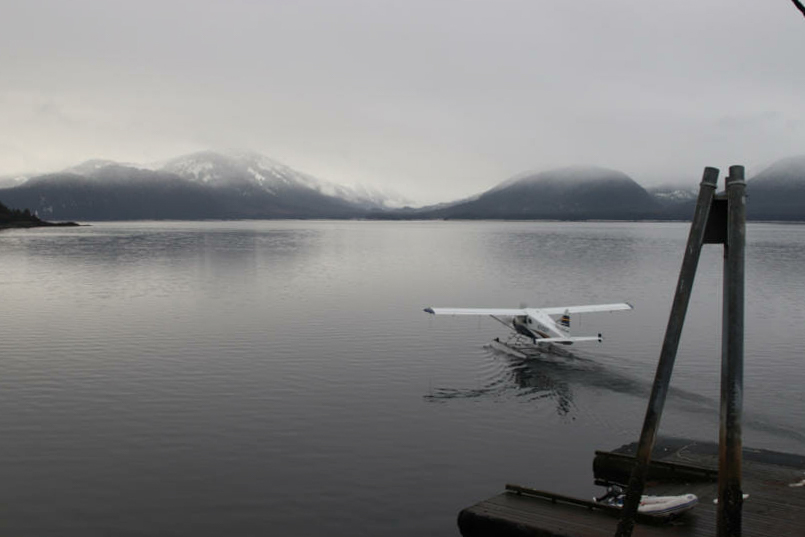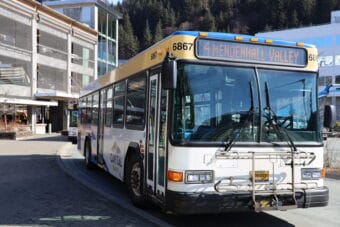
Federal aviation regulators have announced some recommendations to make flying in Alaska safer. It’s an attempt to address Alaska’s outsize share of crashes, but the agency is stopping short of imposing new safety rules on the industry.
There have been at least 21 people killed in plane crashes in the Ketchikan area alone since 2015, and federal crash investigators have called on the Federal Aviation Administration to work with Alaska’s aviation community to improve aviation safety. On Thursday, the FAA announced recommendations stemming from a year-long initiative that looked at the challenges of flying in the 49th state.
First on the list is adding to and improving the FAA’s network of weather stations to offer real-time data to pilots.
“When I was in flight school, I’d fly from Vero Beach to Savannah, Georgia, for some sweet tea and pecan pie, and that’s about 270 miles. You have no less than 15 weather reporting stations,” said Lee Ryan, whose company Ryan Air serves more than 70 small Alaska communities. “When I go home to Unalakleet, Anchorage to Unalakleet is about 340 miles. You have four weather reporting stations in that distance.,” he said.
Also on the list of recommendations is a “comprehensive Alaska airspace navigation strategy.” That includes outlining low-altitude flight routes for small planes and improving navigation infrastructure like GPS. The FAA also recommends updating aeronautical charts to add information about mountain passes.
Another recommendation to the FAA is to encourage carriers to equip their planes with an early warning system to prevent midair collisions and other types of crashes. The technology, known as automatic dependent surveillance-broadcast, or ADS-B, transmits info about the plane’s position, altitude and speed to nearby aircraft, ground stations and satellites.
But the FAA stopped short of a rule that would require carriers to install the systems.
FAA lawyer Howard Martin says new regulations were outside the scope of this initiative.
“This was not a rulemaking process. So it went out went outside of our charter — what we were supposed to do. Those recommendations would be handled through a separate process,” he said.
And that means the FAA’s recommendations don’t include two big priorities long pushed for by the National Transportation Safety Board, which investigates crashes. Those include safety management systems — essentially, risk management protocols for airlines — and data recording devices for all planes carrying paying passengers.
Congressman Don Young said he’s glad to see regulators and the industry come out with practical recommendations.
“You came to the table with ideas. You know, I go through this life with everybody — not everybody, a lot of people — are bitching, don’t have any suggestions. And you came forth with some good suggestions, put them together, and you have made a good report (to) present to the general public and to the Congress,” Young said.
He encouraged the FAA to request additional funding for Alaska safety upgrades in the president’s next budget.
FAA Administrator Steve Dickson told reporters Thursday that Alaska is unique because many communities aren’t served by roads year-round.
“Now, because of this partnership, and this collaboration, we have a set of thoughtful, specific recommendations about how to improve safety in the state, where more than 80% of communities are accessible only by air travel,” he said.
Absent from the rollout was the transportation safety board which investigates crashes. In a statement, NTSB Chair Jennifer Homendy called the FAA’s recommendations a step forward, but she said there’s still more improvements to be done for Alaska.
“Today’s action by the FAA is a step forward in addressing Alaska’s unique place in aviation safety,’’ she said. “But more needs to be done to ensure air transportation is as safe in Alaska as in the rest of the nation. We look forward to reviewing the recommendations.”
The FAA says it’s addressing some of the NTSB’s remaining top recommendations in a separate process.
“The FAA has started the rulemaking process to require Safety Management Systems (SMS) for on-demand/charter operators, and operators conducting air tours under Part 91 of the Federal Aviation Regulations. The FAA also is reviewing the feasibility of requiring all Part 135 operators to install Flight Data Recorder devices on their aircraft,” reads a statement from the agency.
The FAA is slated to propose new rules for charter and air tour operators next fall, according to a notice in the Federal Register.



